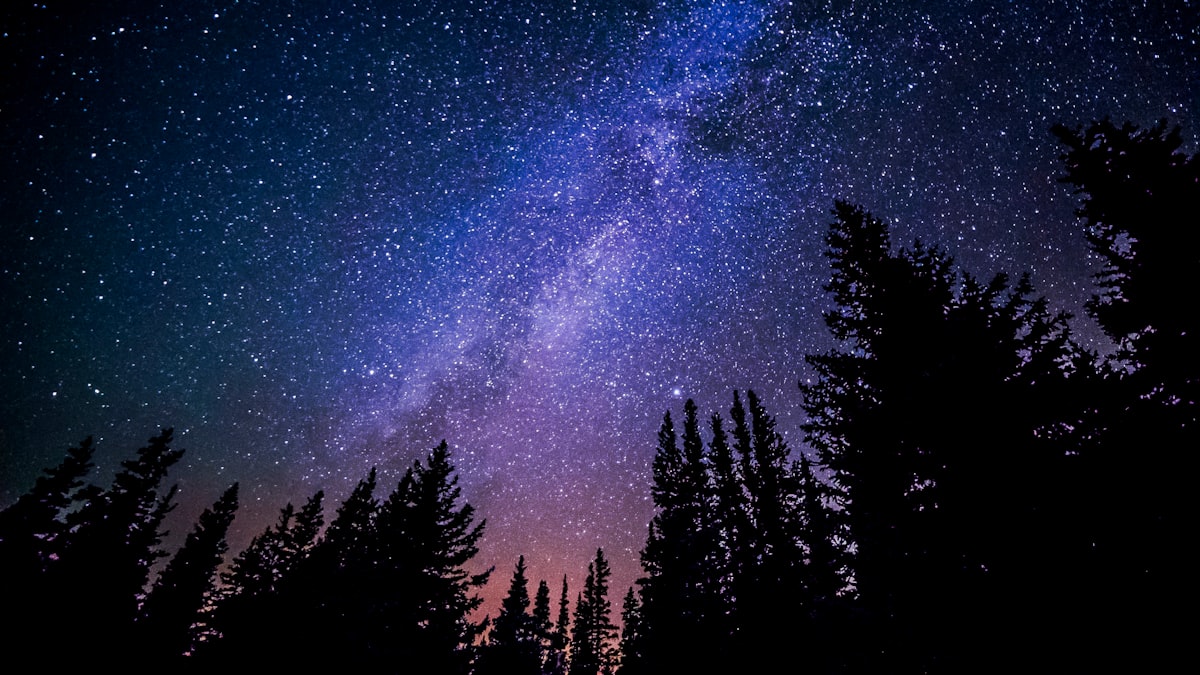Fewer lights, more stars: How the transparency of the sky is measured
Get to know how astronomy and technology converged to develop increasingly specialized instrumentation to measure the transparency of the sky.

One of the most important activities of man in his ascent to culture has been the contemplation of the sky, and he has studied the position and movement of the stars even before becoming sedentary. Get to know in detail how the transparency of the sky is measured and enhanced.
However, hundreds of thousands of years had to pass, until 1609, when Galileo Galilei built his first refracting telescope and began to unveil the secrets of the bright objects of the night sky; from then on, astronomy and technology converged to develop increasingly specialized instrumentation.
Isaac Newton, in 1668, designed and built the first reflecting telescope. Among other things, he used it to confirm his experiment in a closed laboratory of the decomposition of sunlight into the colors of the rainbow. At that time it was difficult to make concave mirrors, so only refracting telescopes with larger and larger lenses were made.
However, the larger the lenses of the telescope, the more complicated it became to make them, and even more so to operate them. The largest refracting telescope that was first built was in Paris in 1900, it had a lens of 1.25 meters in diameter and a focal length of 57 meters; its handling was so complicated that it was only used as an exhibit, which was later dismantled. Today, the Yerkes Observatory in Wisconsin, USA, still operates a 19.4-meter refracting telescope with a 1.02-meter diameter lens.
As astronomy evolved, better instruments were required, and the idea of making reflecting telescopes was dusted off, as they are more user-friendly than refracting telescopes. It was possible to perfect the larger and larger mirrors. Even so, another type of difficulty appeared when observing the night sky, now due to the Earth's atmosphere. While the behavior of light and its characteristics were better understood, ways were sought to solve the problems that astronomers face in making their observations.
Light, like any electromagnetic wave, has diverse properties that are manifested mainly by changing the medium of its propagation; depending on the medium, light is reflected, refracted, dispersed, absorbed, and diffracted; therefore, the light coming from the stars, upon penetrating the Earth's atmosphere, is affected by the gases of which it is composed, so that, when starlight reaches the telescopes, it has already lost part of its luminosity, its brilliance, and suffered other alterations.
The Earth's atmosphere, and the properties of light mentioned, give rise to a series of variables and parameters that must be considered when building an astronomical observatory. The main one of them is the site of stellar observation. Atmospheric variables such as humidity, density, cloudiness, temperature, and wind must be considered. Likewise, the inclination of the Earth's axis of rotation, which gives rise to the seasons, also causes important variations in the climate, resulting in atmospheric variations.
The Sun, when heating the gases that compose the atmosphere, generates convection movements in the air; in the same way, when heating the water of the oceans, it generates water vapor that will turn into cloudiness; these phenomena, wind, and cloudiness, generate patterns in their movement and variations in the climate; thanks to these wind and humidity patterns, a strip is known as "calm belt" is formed, which is found around 30 degrees north and south latitude, which is taken advantage of to look for the most appropriate places to build astronomical observatories.
The parameters that are generated by the variables mentioned above are as follows:
Transparency of the sky
It refers to the clarity of the sky and is measured as the ability to observe weak stars according to their brightness or magnitude. The factors that affect the transparency of the sky are water vapor or cloudiness and suspended particles such as dust, pollen, industrial and vehicular smoke, or environmental pollution in general.
Darkness
It refers to the amount of natural or artificial light present at the observation site. There are two types of factors that affect the darkness of the observation site. The natural ones like the Sun and the Moon, and the artificial ones like light pollution, which is the amount of artificial light present in urban centers.
Extinction
It refers to the absorption of light that the stars, including the Sun, the Moon, and the planets, undergo when passing through or passing through different media such as air, water, etc. The longer the path of light, in this case, the Earth's atmosphere, the greater the decrease in light, or the effect on the color of the star; we can see this effect on the color of the Sun at sunrise or sunset, the light of the Sun changes from white to red passing through yellow and orange as the star descends to the horizon.
Seeing or distortion of the image
It refers to the stability of the air, the more turbulence there is the less stable the image of the observed object; the scintillation of the stars is due to this effect of the Earth's atmosphere; moreover, the larger a telescope is the greater the image distortion. The factors that make this parameter vary or increase are temperature and wind.
In the case of the "Transparency of the Sky" and "Darkness", researchers can do little to avoid them. The only thing is to request that legislation be passed to stop the increase in light pollution and, if possible, to reduce the amount of polluting particles that are thrown into the atmosphere every day.
The "extinction" of starlight as it passes through the Earth's atmosphere cannot be avoided either. However, what researchers do in their work is to obtain measurements of the magnitude or brightness of standard stars (well-known stars) that are close to the star being studied. These measurements are made throughout the night of observation to obtain a reference extinction, which will serve to compare with the measurements obtained from the stars scheduled for study and thus obtain the required data.
On the other hand, to compensate the Seeing is also very interesting what astronomers do. Since the nineteenth century, there was already an awareness of this phenomenon. However, the proposals to solve it were slow in coming. In the 1940's it was thought of as a solution to have observatories outside the Earth's atmosphere. The design of the Hubble Space Telescope, 2.4 meters in diameter, was made between the '70s and 80's placing it in orbit until 1990. The results of this project have been magnificent, above all because not only was Seeing avoided but also all the problems generated by the Earth's atmosphere were avoided. Even so, it has the disadvantage that the maintenance is very expensive and complicated, besides the durability of the artificial satellites is finite.
Another solution to the problem of Seeing in the case of terrestrial telescopes was to take advantage of the studies and measurements made of this parameter, so a scientific-technological solution was thought of and in the 1950s "Active Optics" was proposed and years later "Adaptive Optics" emerged.
One of the methods to measure Seeing is known as DIMM (Differential Image Motion Monitor). It consists of detecting and measuring the displacements that are observed from the image of a star through a medium-sized telescope, but with two eyepieces separated from each other at a distance of between 10 and 20 cms. This telescope is mounted at a certain distance from the observatory and is pointed at a known star. Several measurements are made at different heights (between two and twenty meters approximately) since the temperature differences that exist in the surface layers of the atmosphere also cause image distortions.
Another method used for this purpose is SCIDAR (Scintillation Detection and Ranging), which consists of measuring the refractive indices of light as it enters the Earth's atmosphere.
A third method is to use as an artificial guide (or star substitute), a laser beam that when reaching high atmospheric layers, more or less 90 kilometers high, excites sodium atoms, thus artificially creating a "guide star" to which the image distortion suffered when moving through the Earth's atmosphere can be easily measured.
The data obtained by these methods are analyzed in a computer that is connected to a control system, which has the purpose of commanding a series of pneumatic actuators that modify the shape of it or the primary mirrors of the telescope to which they are connected, this technology is called "Active Optics".
On the other hand, "Adaptive Optics" also uses a software system that controls and moves (approximately 2000 times per second) a series of small lenses connected to a CCD camera, or charged-couple device, to compensate for image distortion caused by small masses of air and thus obtain the best possible image.
Four privileged sites on Earth with the best transparent sky conditions for astronomical observations have been found: Mauna Kea Island, Hawaii, USA; Roque de los Muchachos Volcano, Canary Islands, Spain; Atacama Desert, Chile, and San Pedro Martir Mountain Range, Baja California, Mexico.
They are sites of considerable altitude above sea level, a necessary condition to diminish the distance that the light of the stars travels when penetrating the terrestrial atmosphere and reaching the telescopes; likewise, all of them are in the strip of the belt of calm that was mentioned before.
Two of these sites are islands, the other two are at the beginning of mountain ranges; which is another and very important detail, as soon as the wind reaches the first mountainous elevations it is deflected without reaching to form air currents above the observatory, as it would happen inland. These sites are also far enough away from urban centers to avoid light pollution.
As can be seen, it is not easy to solve the problems generated by the earth's atmosphere to have a transparent sky. However, it is possible to reduce the number of pollutants that are continuously thrown into the environment. On the other hand, for light pollution, what we can do is to replace lights or adapt them so that instead of lighting up the sky, they direct their energy towards the ground. In the state of Baja California, there is already a law against light pollution, which we hope will soon expand to the whole country.
Author: Abraham Rubí Vázquez, head of the Fisilab and coordinator of the conferences El Universo Hoy, of the General Directorate for the Dissemination of Science, UNAM. Source: Noche de las estrellas




